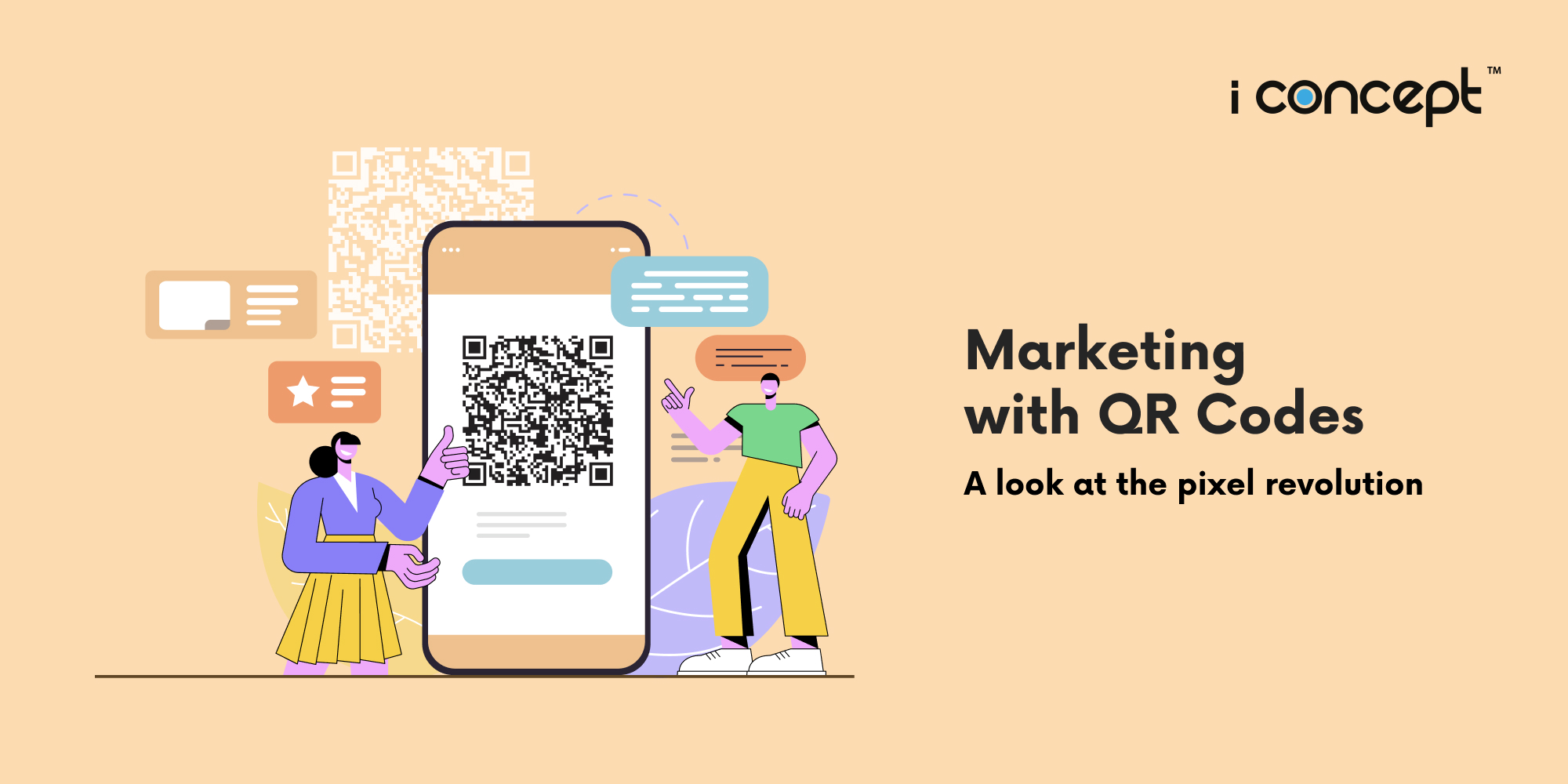One thing became wildly popular worldwide throughout the Covid-19 pandemic. No, not masks or vaccines. It’s ‘quick response code’. Better known as QR code, it is a type of two-dimensional (2D) bar code that a digital agency uses to provide easy access to online information through the digital camera on a smartphone or tablet.
First introduced way back in 1994, QR codes struggled through the noughties, with the black-and-white cubes appearing on ads, posters and packaging, but they never really took off.
The pandemic, however, turned things around. Suddenly, touchless interactions seemed not only convenient but also potentially life-saving. And so we had restaurants introducing digital menus accessed by QR codes, integrated with online ordering systems that meant minimal human-to-human contact processes. Clinics and hospitals put out QR codes for patients to register, and then the QR codes came at the end of the consultations for payments. People checked in and out of venues using QR codes for enhanced contact tracing. The latest news and information were accessible via scanning QR codes on outdoor billboards. Physical tickets for events were taken over with QR codes on phone screens. And so on…
With that, QR codes become part of our daily lives. And they continue to reign the different platforms, and their uses grow. In terms of marketing, its growth is dynamic.
I Concept Singapore takes a look at the ways QR codes can be used to market your brand and your business, and the possibilities that lie in the pixelated box.
What exactly is QR code?
QR codes are 2D barcodes that are scanned through smartphones or similar handheld devices, through cameras or their QR code scanning capability. The strategic use and placement of QR codes with access to the updated and relevant can be a most significant asset.
The QR code was invented in Japan in 1994 by a development team led by Masahiro Hara for the company Denso Wave, a subsidiary of carmaker Toyota. The team was tasked with developing a barcode that makes it easy to track cars and car parts during manufacturing.
QR codes were designed to be read quickly and easily by scanners. They are able to save multiple types of data, including information, text URLs and even GPS coordinates. They can also be used to trigger actions on the phone, such as opening a website or downloading an app. Evolving over the years, QR codes now have even more capabilities, such as being a mobile payment gateway.
There are many types and sizes of QR codes available today. The higher the resolution of a QR code, the more data it can store. The smallest and oldest resolution is a matrix of 21×21 pixels, while version 40 of the QR code can have a resolution of up to 177×177 pixels, thus providing up to 1852 characters of data. Currently, version 10, with a resolution of 57×57 pixels, is the most common type of QR code used around the world.
The systems follow the data from pixel to pixel to encode and decode. Since QR codes can only contain black and white pixels, each pixel can be represented as one bit. Patterns are used in the data to make it easier for scanners to read the QR code so they know when it has reached the end of a line or if there is an error.
The rise of QR code marketing
According to an international digital agency research, there are some 6.6 billion smartphone users across the world. Some 83.4% of the world population owns a smartphone. And with the growing rate of QR code adoption and the many evolving ways that it can be used, it is evident that the pixelated codes can help increase brand awareness, increase sales and to enhance customer engagement.
A modern way to create QR codes is through URL shortening. There are various online tools that allow users to create custom shortened URLs without needing to know anything about HTML (or HyperText Markup Language). When sharing these shortened links, users just need to scan the link with their smartphone camera (or via a QR code-reading application).
Instantaneous access to websites and other promotional information like this makes QR codes a great companion for digital marketing. No more hassle of remembering telephone numbers, social media handles or website addresses, and the bridge between businesses and potential customers become easily set.
How can you use QR codes for your marketing goals?
Increasing social media following
Social media presence for any business is no longer just an option. It’s a necessity.
You can conveniently place a QR code on your products or any marketing material, directing users to your social media pages such as Facebook, Instagram or TikTok, and invite them to give you a ‘Like’.
Invitational copywriting can also get users to follow you for tips and ideas on using your products, or fashion and styling guides for your clothes and accessories.
This is a great way to maximise reach on your brand’s social media networks. You can also ask them to leave a review of your business or product, or tag them in the user-generated content that features your product.
Getting app downloads
If used strategically, QR code marketing can be one of the fastest ways to increase app downloads and drive users into the mobile app marketing funnel.
We see it in the newspapers and magazines, we see it on television advertisements, and we see them on the streets. Instead of getting potential users and customers to open up their ‘app store’ on their phones and search, a quick scan will automatically bring them to the desired page and even trigger an instant download.
Users are typically encouraged to download the apps to gain access to exclusive in-app discounts and privileges, made available only to registered members.
Driving traffic to a website or webpage
You can use the QR code to direct viewers to a page or website with detailed information. The information not covered in the print ad copywriting, such as product description and attributes, detailed pricing, event dates and time, or the procedure to place an order, can all be communicated via the QR code.
There have also been brands that have used the QR codes placed next to a particular item, to get users to scan and directly add them to the digital cart.
Building email marketing lists
Similar to building a base on social media, QR codes can be used on marketing materials such as billboards, print ads and business cards to direct users to web pages. This helps marketers to build extensive email contact lists, by getting users to sign up to gain access to certain offers. This will provide a good boost to your email marketing strategy.
Increasing post-purchase engagement
Make available the opportunity to engage your customers after purchase through smart copywriting and integrating QR codes.
QR codes for rating and review pages are one way to go about it. According to an online survey, 86% of people said they trust online reviews as much as they believe in word-of-mouth. You can use QR codes to ask for product reviews and build customers’ trust by providing them with the information they are looking for.
You can also link these to discount coupons for their future purchases, so they continue shopping with you. QR codes have the ability to drive repeat purchases, and thus increase website traffic.
How to get more scans with QR codes?
- Add a call to action next to your QR code
A QR code is like the door opening into the experience your customer wants to have.
But if there is no sign (or good copywriting) on the door, nobody will enter. A compelling call to action is therefore necessary.
- QR code placement
Make sure your QR code is strategically placed in a visible and prominent position, where your target user can notice it, and are able to scan it quickly. It should be set against a contrasting background, so as to increase its readability.
- Brand your QR code
Do try to make your QR code reflect your brand identity. Having your branding be an essential part of it helps generate (or push for) more scans. You can make code more attractive by customising them using your brand’s colours or including a logo.
- Mind your QR code proportion
While using it on your marketing material or packaging, make sure not to distort the size and ratio of the code, as it can make it difficult to scan (or worse, completely unreadable by scanners).
- Minimise the number of QR codes
If a job can be done by just one, why go for many? If there are multiple QR codes included on your package or print advertorial, it will confuse the audience, and thus you might miss the opportunity to reach them effectively.
- Use an interactive landing page
If you would like to provide multiple pieces of information and a holistic view of your product or service, consider linking to an interactive landing page. There, you can carry outward links to different sources, while remaining a dedicated point of contact between the user and your brand.
- High-quality QR code and trackable data
Make sure you use a high-quality QR code with well-maintained whitespace so it is easy to read and scan.
Also, once your QR code marketing goes live, keep track of the data. This data will tell you about your best-performing and underperforming campaigns, and you can then optimise them accordingly.
The many other ways of using QR codes
QR codes have become the optimal links between users and a world of information. It serves as a bridge of connection, bringing your brand and all that you want people to know about your products and services, through to the public via the pixels. There are so many things that can be done and performed with these codes today.
Know what you want to do, and do what you hope for with QR codes. And if you need some advice and assistance, I Concept Singapore may be able to guide you.
As a leading digital agency, we offer a range of creative solutions, from website and e-commerce store design, and comprehensive digital marketing and social media strategy advice. QR code marketing and implementation, as well as landing page content creation and design, are some of the services we can work out together with you.
We can also help carve out your brand identity, and provide follow-up social media and website management services. Our team of creative strategists, writers and designers will be on hand to help you with your digital marketing needs. Speak with us today to explore the world of marketing with QR codes.










